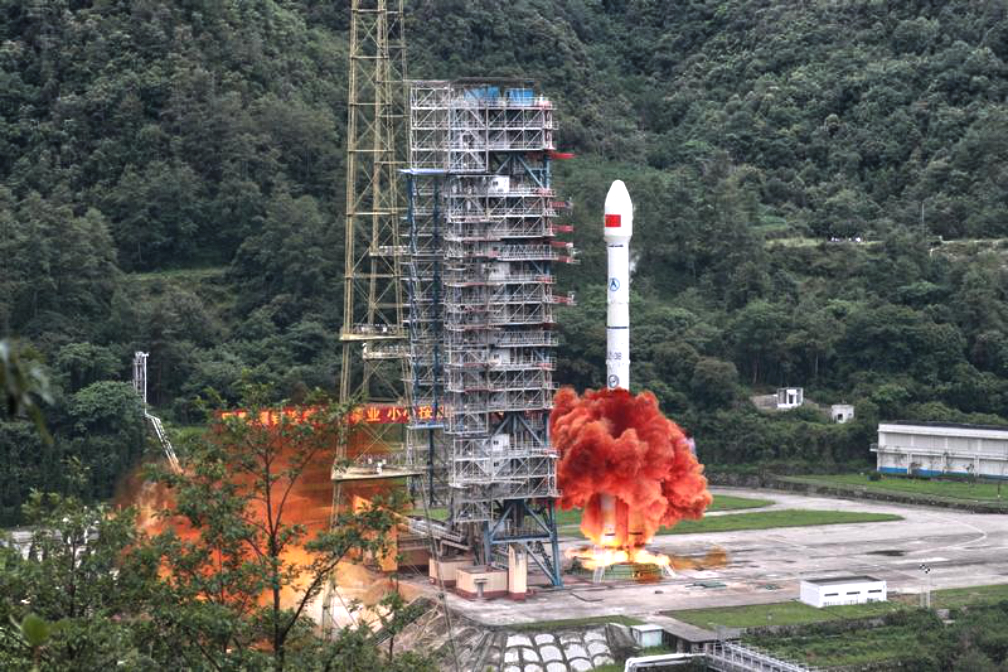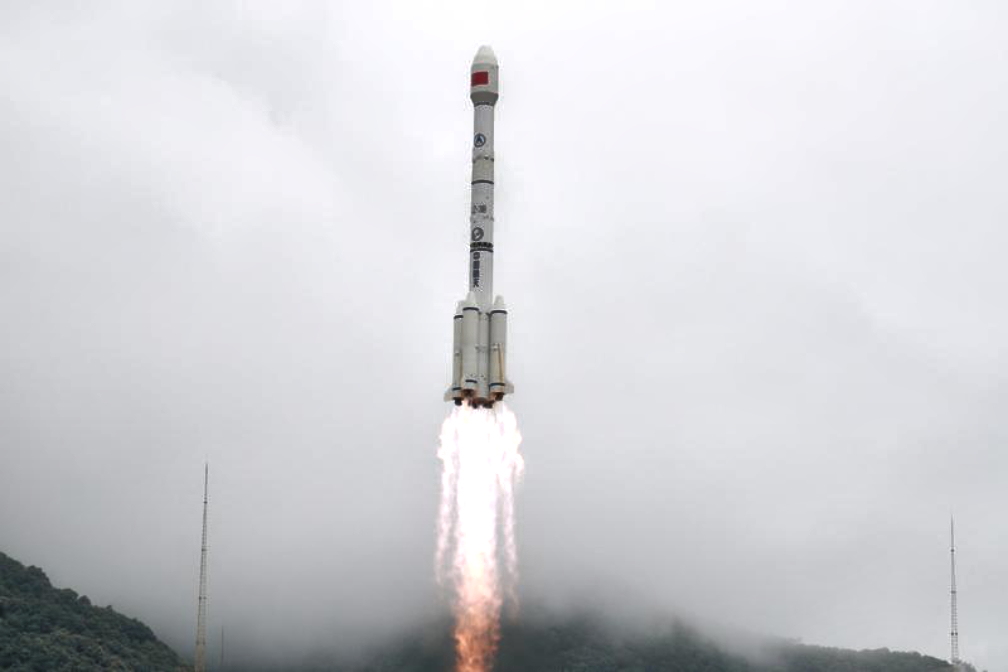
Photo is courtesy of Hu Xujie, China Daily.
The final satellite to complete the third-generation network of China’s Beidou Navigation Satellite System was launched on Tuesday morning, marking a new milestone in the nation’s space endeavors.
At 9:43 a.m. — at the Xichang Satellite Launch Center in Sichuan province — eight engines on the first stage and four boosters of a Long March 3B carrier rocket lifted the 19-story vehicle and satellite into cloudy skies.
The launch marked the completion of the on-orbit construction of Beidou, China’s largest space-based system and one of four global navigation networks, along with the United States’ GPS, Russia’s GLONASS and the European Union’s Galileo.
The satellite was the 55th in the family of BeiDou, which means “Big Dipper” in Chinese, according to the launch center. The launch was broadcast live by China Central Television, the nation’s national broadcaster, becoming the first Beidou mission to go live on TV and also the first televised launch at the Xichang center in a decade.
After a period of on-orbit tests, the new satellite will start formal operations and work with other Beidou satellites, allowing users around the globe to access high-accuracy navigation, positioning and timing services, according to the China Satellite Navigation Office.
The spacecraft, which was transported by rail to the Xichang center on April 4, was designed and made by the China Academy of Space Technology, a subsidiary of State-owned space conglomerate China Aerospace Science and Technology Corp. Based on the DFH-3B satellite platform, the satellite is designed to function for at least 12 years.

Photo is courtesy of Hu Xujie, China Daily.
As of this event, 59 satellites, including the first four experimental ones, have been launched from Xichang via Long March 3Bs, some satellites having since been retired. There also are some second-generation Beidou satellites in operation offering regional services.
Chen Zhonggui of the China Academy of Space Technology, chief designer of the third-generation satellite, said, “Compared with the second-generation satellites, the third-generation models feature higher accuracy and stability, a clearer signal and more state-of-the-art technologies such as inter-satellite links, satellite-based augmentation and global emergency search capability.” He added that the new Beidou generation is 10 times stronger than the second generation in terms of overall service capability.
In addition to optimized navigation and positioning capabilities, the third-generation model allows a user to send 1,200 Chinese characters in a single message from places with poor, conventional, communication signals, while previous models could send only 120, Chen added.
Beidou has not only tens of satellites but also a vast ground-based network that includes dozens of stations, more than 200 subsystems and over 30,000 sets of equipment. More than 100,000 scientists, engineers and technicians from more than 300 domestic institutes and enterprises have been involved in Beidou’s development and construction.
Beidou began providing positioning, navigation, timing and messaging services to civilian users in China and other parts of the Asia-Pacific region in December 2012. At the end of 2018, Beidou started to provide global services.
This launch was the 336th by the Long March rocket series.
Article source: China Daily
